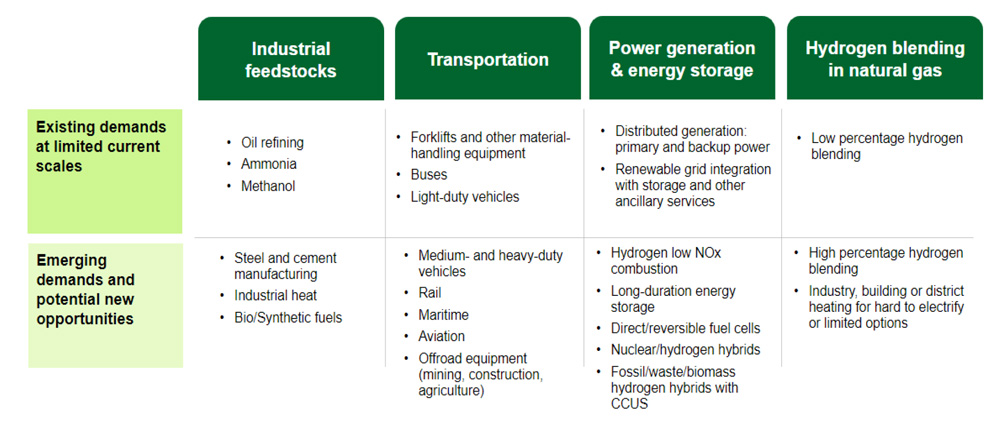
The Department of Energy Thursday announced the opening of applications for $7 billion in funding for six to 10 clean hydrogen hubs.
“These hubs are going to be located in different regions all across the country,” Energy Secretary Jennifer Granholm said in announcing the solicitation at the Global Clean Energy Action Forum in Pittsburgh. “They’re going to use a variety of feedstocks — abated fossil fuel, renewables, nuclear — and they’ll focus on different end uses, for example, electricity generation, industrial production, residential, commercial heating [and] transportation.”
Funded by the Infrastructure Investment and Jobs Act, the “H2Hubs” will be one of the largest investments in DOE’s history, the agency said. It will be managed by DOE’s Office of Clean Energy Demonstrations with support from the Office of Energy Efficiency and Renewable Energy.
Concept papers are due by Nov. 7, with the deadline for full applications set for April 7, 2023.
Funded projects must include a “community benefits plan” to support disadvantaged communities, workforce development and diversity goals.

Along with the solicitation, DOE also released its National Clean Hydrogen Strategy and Roadmap for public comment.
The report is the next step in the Hydrogen Energy Earthshot announced in June 2021, which set a goal of reducing the cost of clean hydrogen by 80% to $1/kilogram within a decade.
Granholm said the document projects “that by 2030, that our country’s clean hydrogen market might be twice as large as we projected originally: 10 million metric tons [MMT] by 2030, 20 million by 2040 and 50 million metric tons by 2050.”
The U.S. currently produces about 10 MMT of hydrogen per year — mostly for the petroleum refining, ammonia and chemicals — but that production generates greenhouse gases.
The report says clean hydrogen could reduce U.S. emissions by 10% by 2050 relative to 2005 levels, “based on achieving cost competitiveness to enable demand in specific sectors and where there are fewer alternatives, such as direct electrification or the use of biofuels.”
“Specific markets include the industrial sector, heavy-duty transportation and long-duration energy storage to enable a clean grid,” the road map says. “Long-term opportunities include the potential for exporting clean hydrogen or hydrogen carriers and enabling energy security for our allies.”


